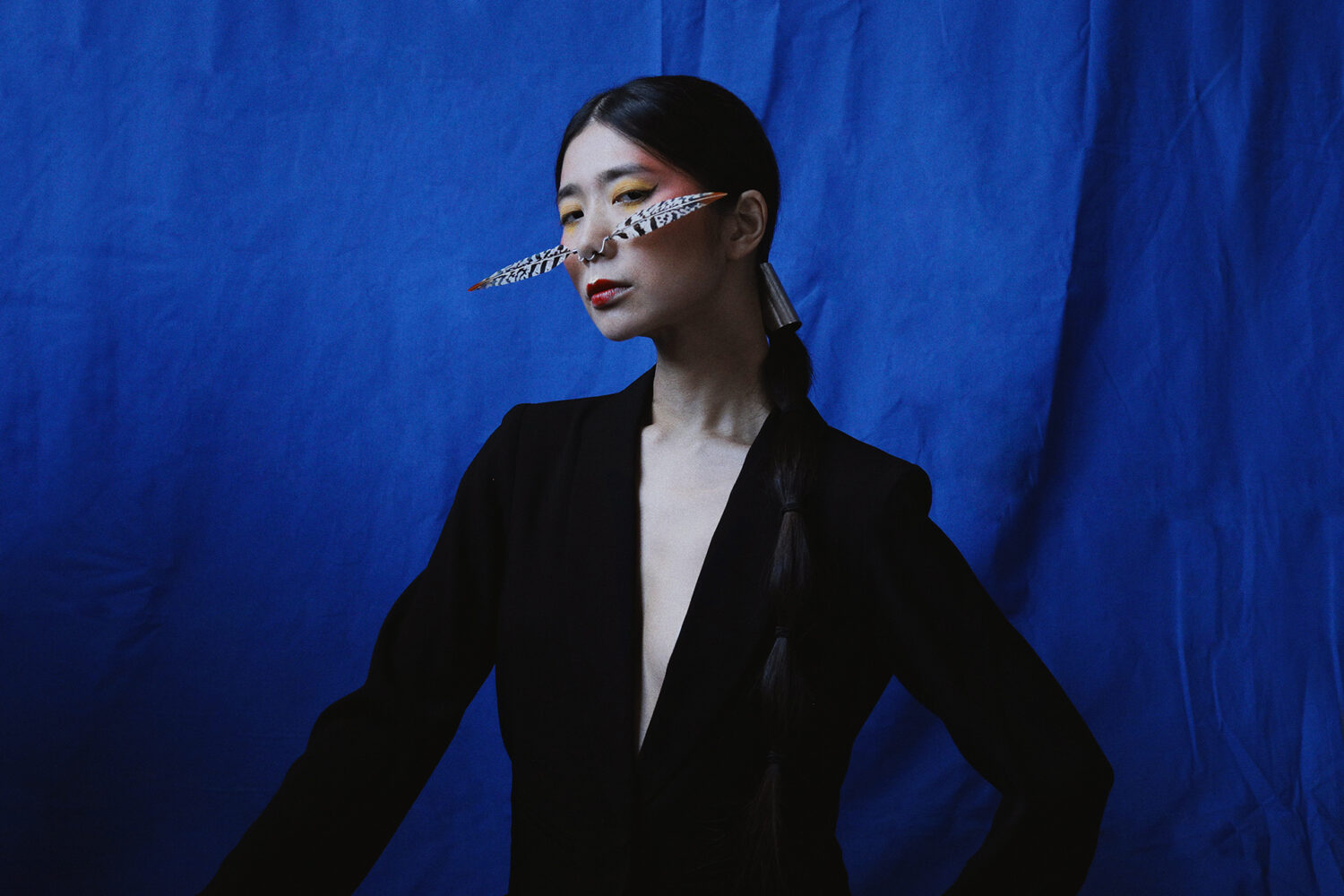Interview: Hatis Noit On Growing Up In Hokkaido & The Making Of Her Debut Album, ‘Aura’
By Something CuratedCurrently based in London, Japanese vocal performer Hatis Noit’s impressive range is inspired by everything from Gagaku – a type of Japanese classical music that was historically performed in the imperial court – and operatic styles, to Bulgarian and Gregorian chanting, and avant-garde and pop vocalists. The name Hatis Noit itself is taken from Japanese folklore, meaning the stem of the lotus flower. The lotus represents the living world, while its root represents the spirit realm, therefore Hatis Noit is what connects the two. For Hatis Noit, music represents the same netherworld with its ability to move and transport us to the other side – the past, a memory, our subconscious. Equally poetic, the visuals for her latest single, directed by Yuma Kishi, dropped last month, and her first full-length album for international release, titled Aura, will be out on 24 June 2022. To learn more about the fascinating artist and her anticipated new project, Something Curated spoke with Hatis Noit.
Something Curated: Can you give us some insight into your background and journey to making music?
Hatis Noit: I was born on the northernmost island of Japan, Hokkaido, which is a natural heritage site surrounded by great nature. Since I was a child I have loved singing and making noises using anything I could find around me, such as plates, cutlery, pens, branches on the street. Despite my family often complaining how bad my singing was, I didn’t care and I just loved it so much. That was my very first musical experience.
SC: What is the thinking behind your latest single, Angelus Novus? And how did you approach creating the striking visuals with Yuma Kishi for the song?
HN: The song is about memories of struggle both personal and social and its healing process. For the video it refers to a more specific struggle of mine, which I experienced when I moved to the UK. Despite the people around me being so kind and supportive, I still struggled with a self-alienated feeling due to my Asian appearance that made me feel like I’m not welcomed. Also sometimes being greeted with “Ni Hao” (“Hello” in Chinese) made me feel uncomfortable. But why? Where is the boundary between us? Is there a fundamental line that distinguishes us? I started thinking about it a lot.

When I found Yuma’s artwork, I thought this would be perfect to visualise the struggle and its healing path. Kishi’s A.I combines three Asian figures into some new creature without any prejudice. I wanted to explore the borderline between individuals and show how apparent but fluid it is. We are all obviously unique, but still we can see the commonalities between us – not only appearance but also we share the same emotions, sentiments such as longing to love and to be loved, missing someone or somewhere, beyond race, gender, ethnicity, nationality, whatever.
SC: Introduce us to Aura — what can we expect from your anticipated debut album?
HN: During the pandemic I felt like I was lost. Everything was grey; I didn’t feel any emotion anymore. But one day, singing helped me so much to realise again what a beautiful thing it is that I am alive on this planet with a limited lifetime. I’m here with this body. I can still sing. I believe when we have a safe place to explore ourselves deeply – what we feel, what we want, where we come from – we can be more kind and compassionate to each other. If I can provide a space like that through the album and my music, that would be more than amazing.
SC: From Gagaku to Bulgarian chanting, your sonic output borrows from diverse traditions; could you expand on some of the key inspirations that have shaped your sound?
HN: I’m just so in love with human voices and curious about them. So I always look for and enjoy any style of vocalisation from all over the world. From folk songs of Amami, Okinawa and Ainu people in Japan to Aaka Pygmies’ or Solomon Islands’ folk music etc. – I’m inspired by all of this great music I can find and the exploration will continue.
SC: How have these tumultuous past two years influenced your way of making work?
HN: On the positive side of the pandemic, it let us explore our local area more. Especially for artists often being away for working and touring, that was a great opportunity to rediscover the local community. That’s how I discovered the great engineer Marta Salogni and the beautiful local church where we re-amp the audio files of my vocal to get natural reverb sounds for the album.
SC: And what are you currently listening to?
HN: TRACES DE CRIMÉE shot by Vincent Moon.
Feature image: Hatis Noit. Photo: Özge Cöne